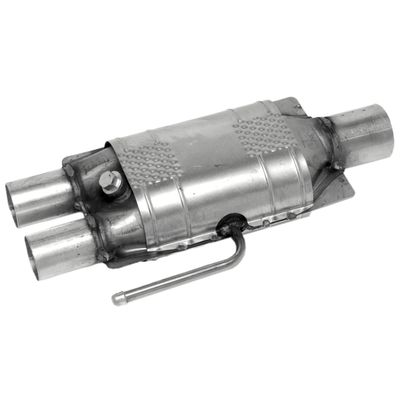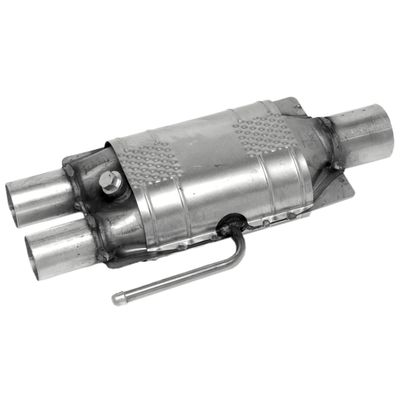Answer
Aug 20, 2024 - 08:21 AM
Determining whether your catalytic converter is factory (OEM) or aftermarket involves checking for specific signs, markings, and other characteristics. Here’s how you can identify the type of catalytic converter on your vehicle:
1. Check for Manufacturer Logos and Part Numbers- OEM Markings: Factory-installed (OEM) catalytic converters usually have the vehicle manufacturer’s logo, name, or part number stamped or engraved on the converter. For example, if you see a Ford, Toyota, Honda, or GM logo, it’s likely an OEM part.
- Aftermarket Markings: Aftermarket converters typically have the brand name or logo of the aftermarket manufacturer (such as Walker, MagnaFlow, or Bosal). They may also have different part numbers that don’t match the original equipment.
- OEM Design: OEM catalytic converters are designed to fit perfectly with the vehicle’s exhaust system, matching the original design and specifications. They often have a more refined and precise appearance, with smooth welds and consistent construction.
- Aftermarket Design: Aftermarket converters might have a more generic design that fits a range of vehicles. They may look slightly different in shape, size, or construction from the original part, although some high-quality aftermarket converters closely mimic OEM designs.
- OEM Certification: OEM catalytic converters may have specific labels or stamps indicating they meet the original manufacturer’s emissions standards.
- Aftermarket Certification: Aftermarket converters often have labels or stickers indicating they meet EPA or CARB (California Air Resources Board) emissions standards. These labels may include the words “EPA” or “CARB-compliant,” along with the manufacturer’s name and part number.
- Service Records: If you have access to the vehicle’s service history, you can check to see if the catalytic converter has been replaced. If it has, the service records should indicate whether an OEM or aftermarket part was used.
- Dealership or Independent Shop: A dealership is more likely to install an OEM converter, while independent repair shops might offer aftermarket options, depending on customer preference and cost considerations.
- Weld Quality and Finish: OEM converters typically have higher-quality welds and a more polished finish, reflecting the standards of the vehicle manufacturer. Aftermarket converters might have more visible or rougher welds.
- Heat Shields: Some OEM converters come with integrated or well-fitted heat shields. Aftermarket converters might have different styles of heat shields or may require separate installation.
- VIN Decoder: Some online VIN decoders or manufacturer websites allow you to input your vehicle’s VIN to retrieve details about its original equipment, including the catalytic converter.
- Contact the Manufacturer: If you’re still unsure, you can contact the vehicle manufacturer or a dealership with your VIN, and they can provide information on whether the catalytic converter on your vehicle is OEM.
- OEM Parts: OEM catalytic converters are generally more expensive due to the higher quality materials and the fact that they are made to exact specifications for the vehicle.
- Aftermarket Parts: Aftermarket converters are often less expensive and may vary in quality depending on the manufacturer.
By checking for specific markings, construction quality, service history, and other details, you can determine whether your catalytic converter is factory-installed (OEM) or an aftermarket replacement. If in doubt, consulting with a professional mechanic or contacting the vehicle manufacturer can provide further clarification.





Add New Comment